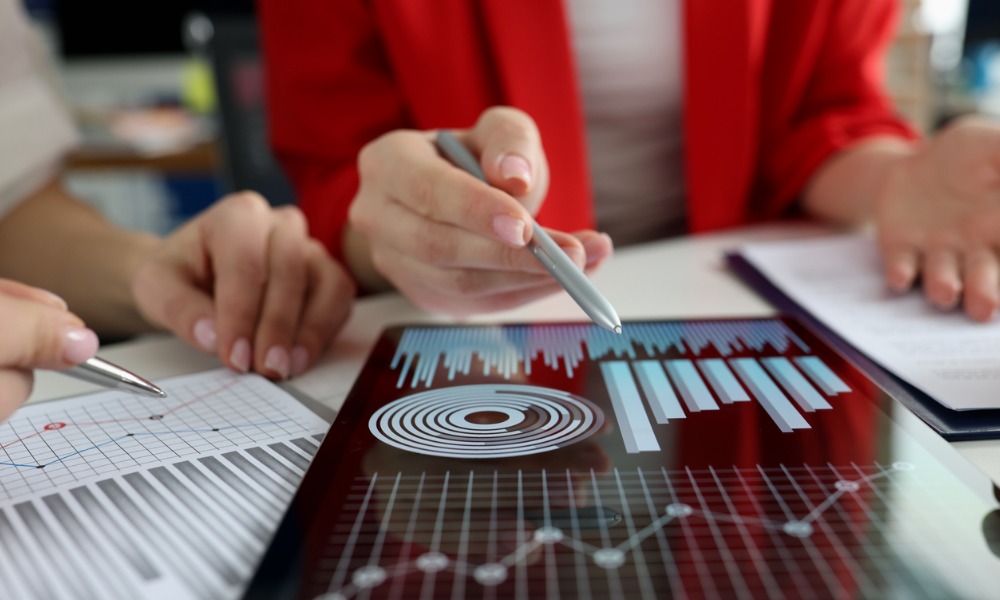Canadian “active trading” firm reports big pick-up in business; offering a fascinating range of new products.
One of the defining features of markets this year had been the low levels of volatility. Traders seemed to be on the bench earlier in the year. Without much market traffic so-called active traders found it difficult to make money. That changed this past September when markets went haywire.
OANDA, a provider of forex and so-called “contracts for difference” trading services, reports that it “closed the books on September with a record-breaking month in both trading volume and new client accounts.” That is, active traders flocked back to markets as the market volatility and chaos of this fall offered up trading opportunities. October has also been a strong month for active traders according to the company.
The volatility may have worried long-term investors. But active traders, those loan wolves who make a profit from home using desktop computer-based trading programs to buy in and out of positions rapidly over the course of a day, have prospered. In the late 1990s these traders first emerged and known as day traders. Since then the sector has evolved, has become a regular part of markets. But lowered levels of volatility over the last couple of years tempered the ability of active traders pull out a profit by rapid trading. The recent round of volatility has seen the active traders get back behind their trading terminals.
In interview with WP, with Courtney Gibson, vice-president of trading at OANDA Corporation, says, “It’s a story that varies region by region around the globe, but our Canadian base in particle has taken the opportunity to take advantage of the recent volatility.” The Scottish referendum and soft Chinese economic growth data were two key events. “These were major events for investors. It started with the referendum. The speculation on the pound and the euro created a tipping point. Everyone from professors to banks and politicians were talking about the direction of the currencies,” says Gibson.
Since then the activity has moved from one announcement to the next; questions about Euro stability, U.S. growth figures, all have created opportunities for active traders. “The action has been moving from announcement to another. It seems there is more sustained interest. Through the summer activity would die down in the hours after an announcement. But now there is more sustained activity happening,” he says.
For those who haven’t kept up with developments in the active trader space there is a whole new range of products available. Today mobile apps allow individuals to make trading decisions away from the desktop. “This can give you a 24-hour-a-date advocate in the market to allow you to trade through the day, away from your desk,” says Gibson. Also new in the sector are more advanced computer algorithms that traders can use to play the market. Over the last year there has been much talk about sophisticated hedge funds using advanced digital technology to do high frequency trading (Michael Lewis’s book on the subject was a best-seller). But retail active traders are also picking up on the possibilities in computerized trading. According to Gibson, “There is growing base of users who are comfortable with programming and analysis. Some people are buying pre-made algorithms. All across the internet sites are popping up where programs are being traded…traders are trading investment recipes if you will.”
OANDA offers a program OANDA offers an application program interface (API) that allows traders to write software to trade on its system. That is, some traders can write a program that will manage their account according to certain variables, allowing the net-bot to act as a proxy trader and work in markets all day and night. “We can tell by certain configurations who are the really tech savvy traders out there….we see a core of folks who have a computer engineering degree and are comfortable programming….It’s interesting, it gives the trader an advocate in the market twenty-four seven.”
It seems there is a serious base of programmers and computer engineers that are bringing their skills to bear on their home trading systems. One new twist in the space: Traders are taking advantage of cloud computing opportunities to locate their “trading” closer to the exchange they are trading on. That is, a trader located far from the exchange, might otherwise be disadvantaged by their distance from the exchange. Now they can upload a trading programming to a site nearer the exchange, thereby overcoming the geographic distance. “This is really democratizing geography. It doesn’t matter where you live, you can upload a trading programming to a site nearer the exchange via a virtual private server (VPS) thereby overcoming the geographic distance. Even if you live in Yellowknife, you can upload your program to these spaces,” says Gibson. “There is a lot of investor interest in this. It’s getting a lot of traction. It’s not just high end hedge funds….it’s your average guy at home.”
Gibson also happens to teach computer engineering at U of T. He describes OANDA’s strength as the ability to create the right trading interfaces. “We’re a software company that went into markets. We’re not a bank,” says Gibson. He describes one of the company’s new-style clients: “We have one guy who was employed analyzing cardiac signals. Now he studies market signals. It’s interesting the approaches people use to get here. But there is a base of computer engineers in the population. These are interesting trends.” No kidding.
OANDA, a provider of forex and so-called “contracts for difference” trading services, reports that it “closed the books on September with a record-breaking month in both trading volume and new client accounts.” That is, active traders flocked back to markets as the market volatility and chaos of this fall offered up trading opportunities. October has also been a strong month for active traders according to the company.
The volatility may have worried long-term investors. But active traders, those loan wolves who make a profit from home using desktop computer-based trading programs to buy in and out of positions rapidly over the course of a day, have prospered. In the late 1990s these traders first emerged and known as day traders. Since then the sector has evolved, has become a regular part of markets. But lowered levels of volatility over the last couple of years tempered the ability of active traders pull out a profit by rapid trading. The recent round of volatility has seen the active traders get back behind their trading terminals.
In interview with WP, with Courtney Gibson, vice-president of trading at OANDA Corporation, says, “It’s a story that varies region by region around the globe, but our Canadian base in particle has taken the opportunity to take advantage of the recent volatility.” The Scottish referendum and soft Chinese economic growth data were two key events. “These were major events for investors. It started with the referendum. The speculation on the pound and the euro created a tipping point. Everyone from professors to banks and politicians were talking about the direction of the currencies,” says Gibson.
Since then the activity has moved from one announcement to the next; questions about Euro stability, U.S. growth figures, all have created opportunities for active traders. “The action has been moving from announcement to another. It seems there is more sustained interest. Through the summer activity would die down in the hours after an announcement. But now there is more sustained activity happening,” he says.
For those who haven’t kept up with developments in the active trader space there is a whole new range of products available. Today mobile apps allow individuals to make trading decisions away from the desktop. “This can give you a 24-hour-a-date advocate in the market to allow you to trade through the day, away from your desk,” says Gibson. Also new in the sector are more advanced computer algorithms that traders can use to play the market. Over the last year there has been much talk about sophisticated hedge funds using advanced digital technology to do high frequency trading (Michael Lewis’s book on the subject was a best-seller). But retail active traders are also picking up on the possibilities in computerized trading. According to Gibson, “There is growing base of users who are comfortable with programming and analysis. Some people are buying pre-made algorithms. All across the internet sites are popping up where programs are being traded…traders are trading investment recipes if you will.”
OANDA offers a program OANDA offers an application program interface (API) that allows traders to write software to trade on its system. That is, some traders can write a program that will manage their account according to certain variables, allowing the net-bot to act as a proxy trader and work in markets all day and night. “We can tell by certain configurations who are the really tech savvy traders out there….we see a core of folks who have a computer engineering degree and are comfortable programming….It’s interesting, it gives the trader an advocate in the market twenty-four seven.”
It seems there is a serious base of programmers and computer engineers that are bringing their skills to bear on their home trading systems. One new twist in the space: Traders are taking advantage of cloud computing opportunities to locate their “trading” closer to the exchange they are trading on. That is, a trader located far from the exchange, might otherwise be disadvantaged by their distance from the exchange. Now they can upload a trading programming to a site nearer the exchange, thereby overcoming the geographic distance. “This is really democratizing geography. It doesn’t matter where you live, you can upload a trading programming to a site nearer the exchange via a virtual private server (VPS) thereby overcoming the geographic distance. Even if you live in Yellowknife, you can upload your program to these spaces,” says Gibson. “There is a lot of investor interest in this. It’s getting a lot of traction. It’s not just high end hedge funds….it’s your average guy at home.”
Gibson also happens to teach computer engineering at U of T. He describes OANDA’s strength as the ability to create the right trading interfaces. “We’re a software company that went into markets. We’re not a bank,” says Gibson. He describes one of the company’s new-style clients: “We have one guy who was employed analyzing cardiac signals. Now he studies market signals. It’s interesting the approaches people use to get here. But there is a base of computer engineers in the population. These are interesting trends.” No kidding.



